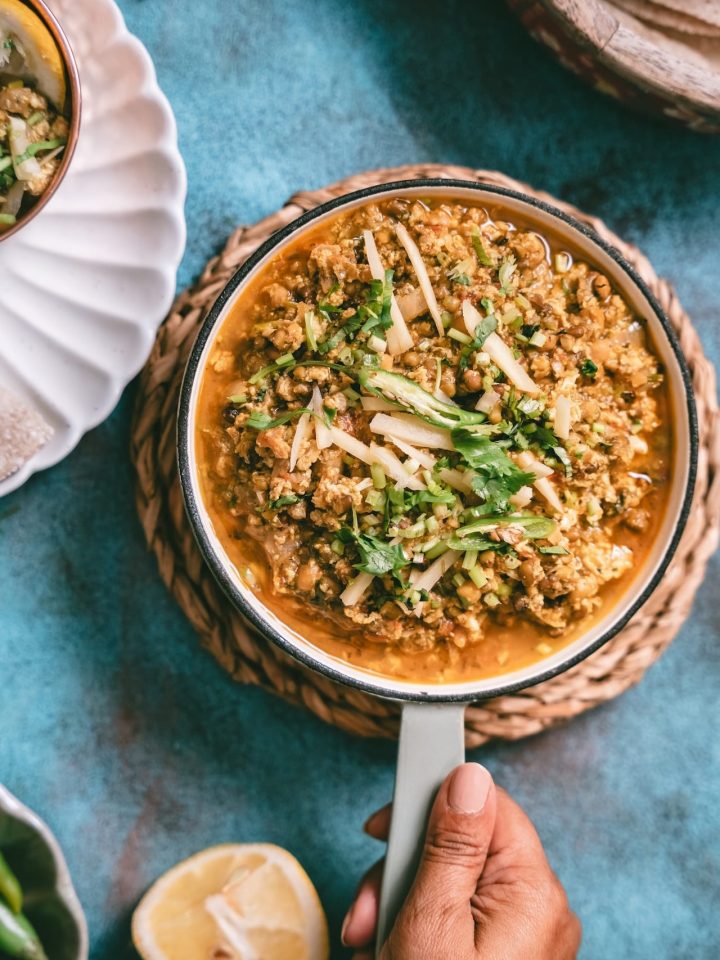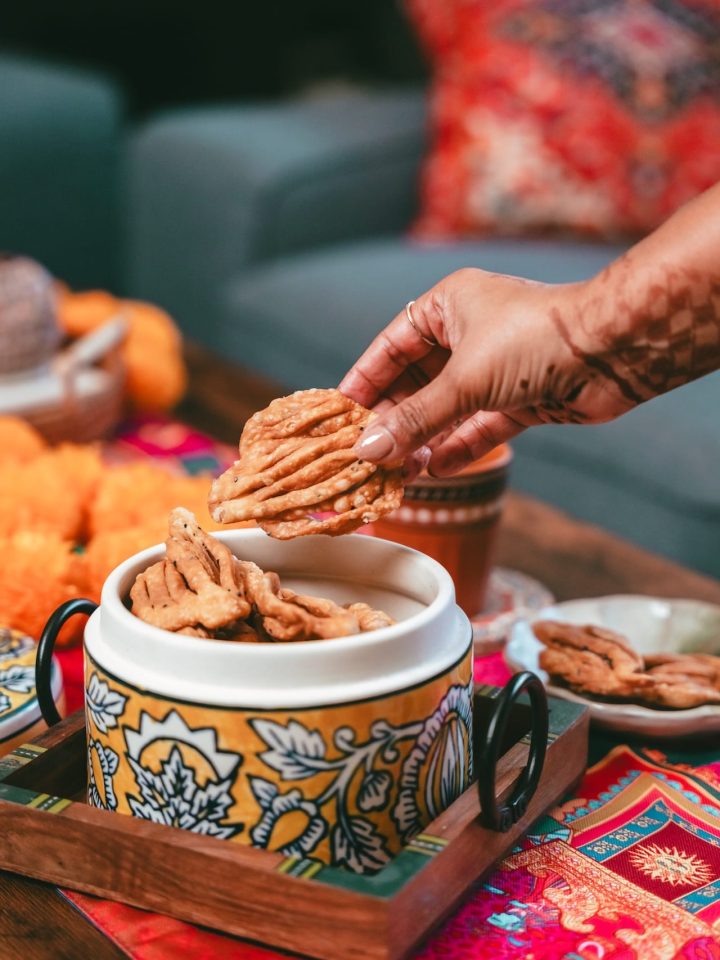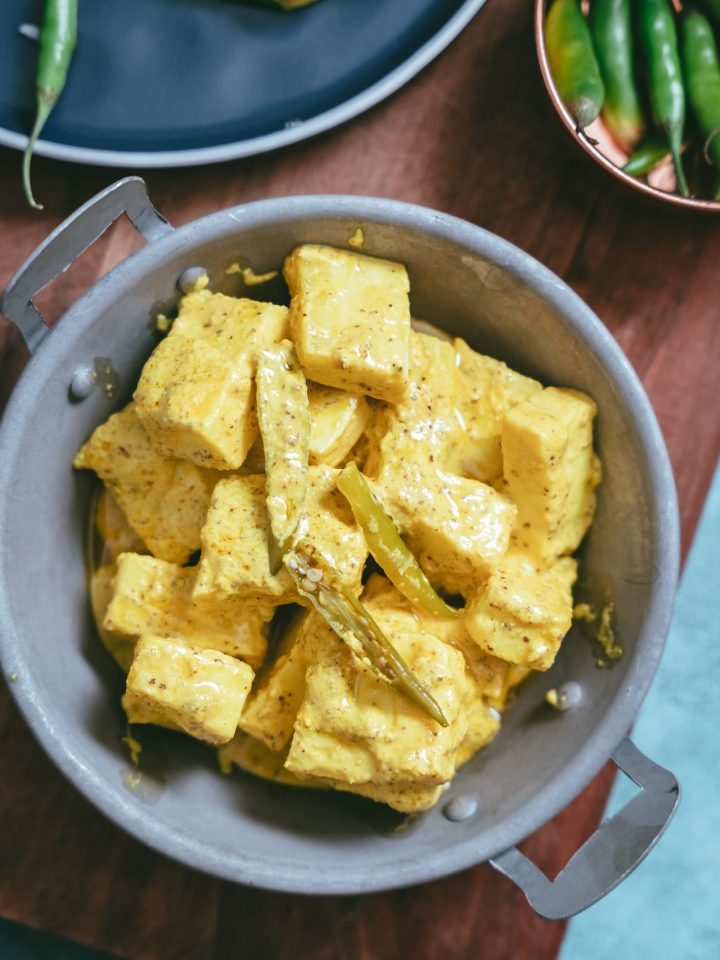Radhaballavi is a classic Bengali delicacy! Often served during festive occasions like Durga Puja. Radhaballavi is a fluffy, stuffed puri (deep-fried bread) filled with a spiced urad dal (black gram) mixture.

Radhaballavi is a quintessential durga puja special breakfast or snack item, usually paired with a delicious side of aloor dom (spiced potato curry) or cholar dal (a Bengali-style chana dal or split Bengal gram curry).
The story behind the name Radhaballavi
I am not of the real story. I read some article that said that the name Radhaballavi has a cultural and spiritual connection. "Radha" and "Ballavi" are often associated with Radha and Krishna, figures from Hindu mythology. Radha symbolizes love and devotion, and the dish is believed to be so divine in taste that it’s fit for a deity.
Then I found this explanation - "The name is as bewitching as the dish is. According to food historians, Radhaballabhi is a staple item offered to Radha-Ballavjiu, the in-house deities of the Singha family, erstwhile rulers of Kandi in Murshidabad. Kandi Raj family, popularly known as Lala Babu’s family belong to the Uttar Rarhi class of Kayastha and their origin is traced from Anadibar Singha who settled in Bengal in 9th-century during the reign of Adisur. The royal family has always been devout Vaishnavites and Gouranga Singha built the shrine of Thakur Shri Shri Radhaballav Jiu, the presiding deity of the family" from a website - getbengal
Now let's leave aside the story and make this delicious, Indian fried bread.
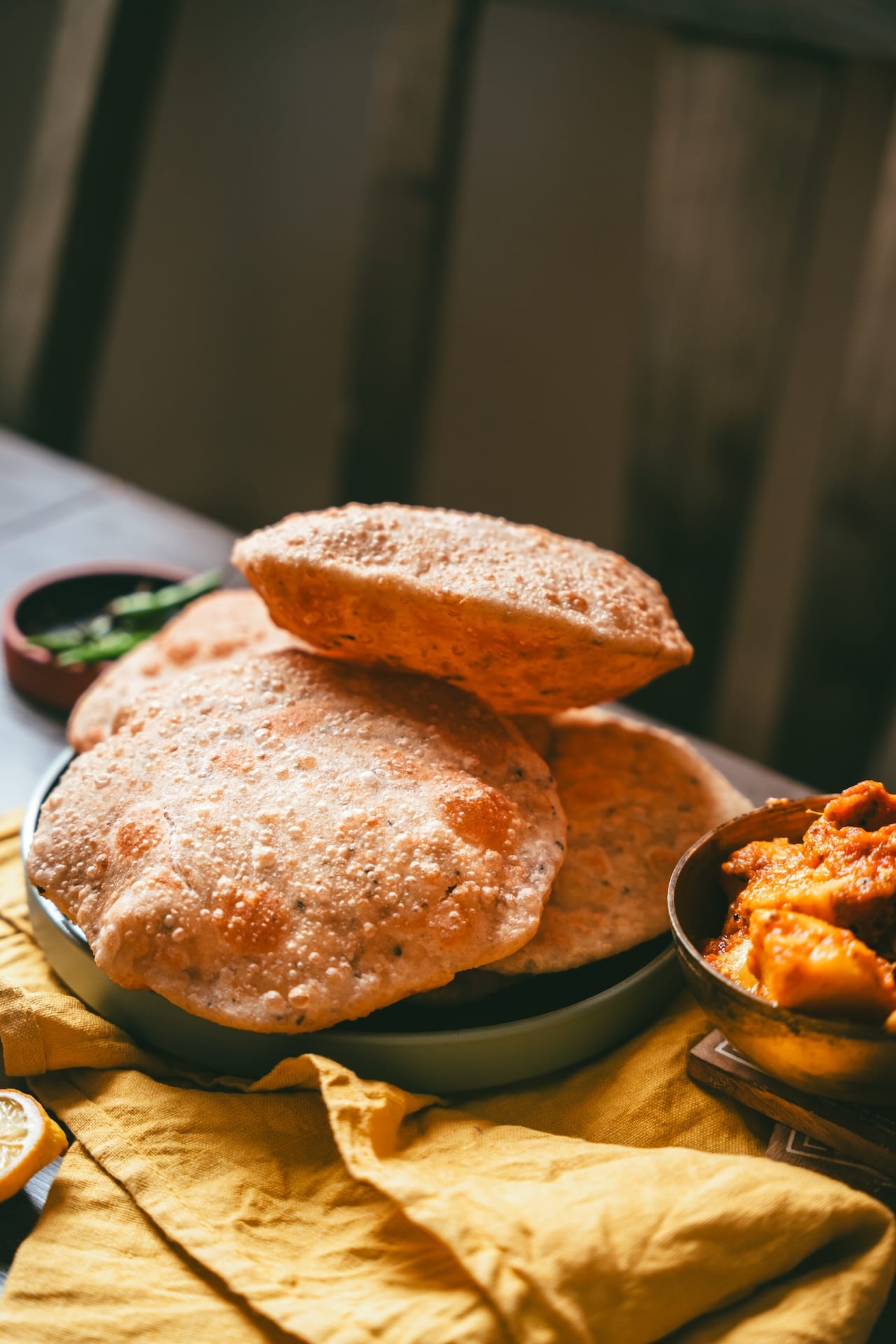
Ingredients you need to make Radhaballavi
For the filling
Urad Dal -It's Split black lentils without skin and hence looks off-white. You can buy whole or split.
Fresh Ginger and Green Chili - Ginger is a brilliant flavor pairing with urad dal/split black lentils. So don't skip that. And Green chili, you can add as much or little based on your spice level.
Spices - Nigella seeds and ground fennel seeds are used. Nigella seeds add the pungent aroma, while fennel seed gives the perfumy aroma to radhaballavi. You want to use fresh ground fennel seeds for the best, refreshing aroma. Asafoetida/hing not only adds umami flavor, but it also helps in digestion.
Mustard oil or Vegetable Oil to prepare the filling. And Salt for seasoning.
For the dough
All-purpose flour - You can definitely make it healthier by using whole wheat flour too, but the classic recipe calls for all-purpose flour.
Salt and Sugar - Salt and sugar both helps in seasoning.
Spices - Both Nigella seeds and Fennel powder is used in the filling and now again in the dough.
Oil - A little amount of oil is used to prepare the dough, and then you need a lot more to fry the filled rolled dough.
The exact measurement in mentioned in recipe card below.
Steps to prepare
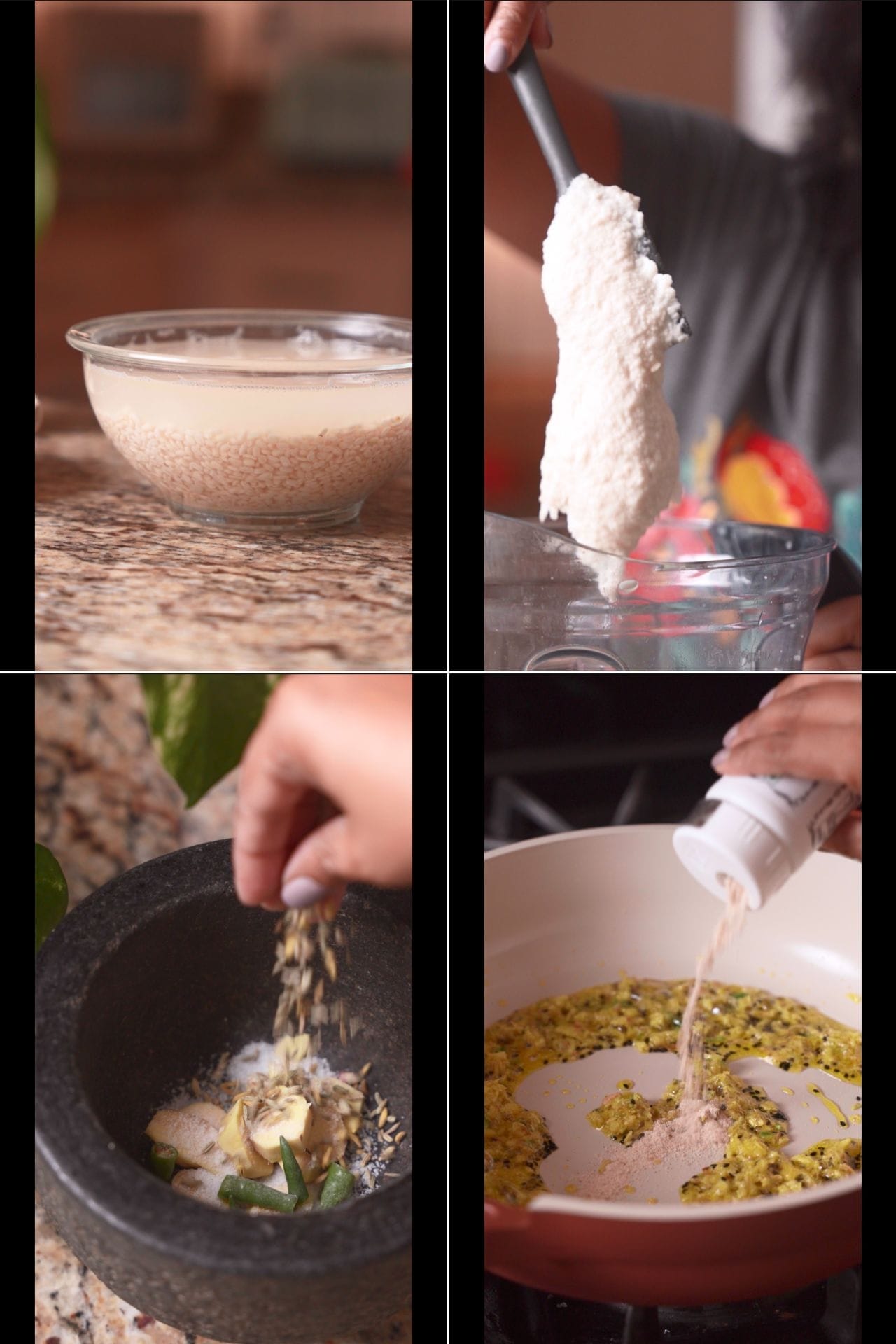
1- Wash the Urad Dal a few times and then soak it overnight or at least for 5 to 6 hours.
2- Drain most of the water and then grind it to a thick consistency. Don't add too much water while grinding.
3- In a motor pestle add the ginger, green chili, salt and fennel seeds. Pound it to form a smooth paste. You can use an electric spice grinder too.
4- In a heavy bottom pan, add mustard oil and heat it. Then add nigella seeds followed by the ginger chili paste with asafoetida. Stir and cook for a few minutes.
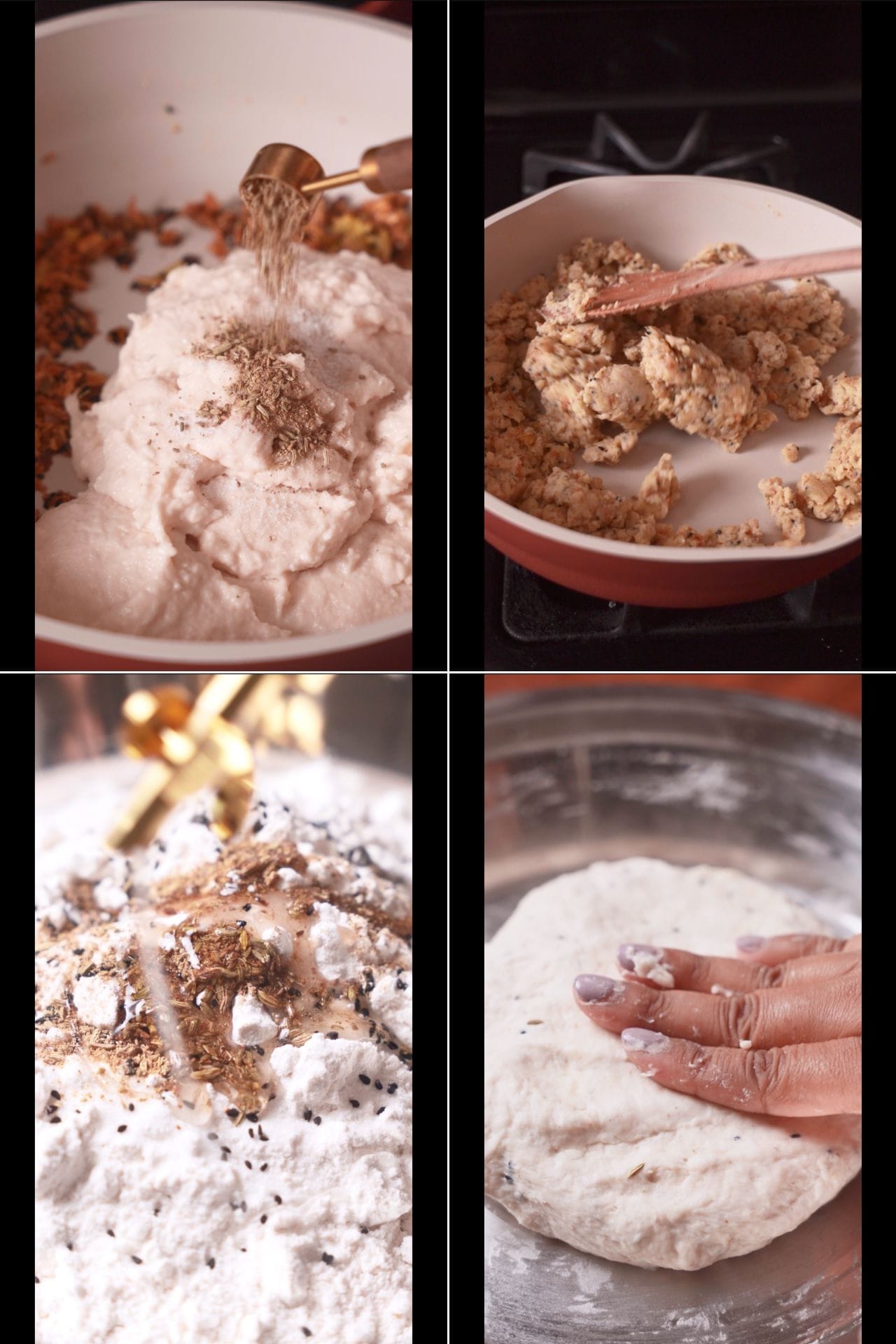
5- Add the urad dal paste, salt and fennel powder. Stir and cook the paste for 5 to 10 minutes. You have to keep stirring and cook in low heat or else it will stick to the bottom of the pan and get burnt.
6- Depending on how much moisture is there, it might take more or less time to cook. You want the texture of the filling to be dry and not sticky.
The filling can be prepared in advance and stored in a clean dry airtight container, in the fridge for up to a week.
7- For the dough, in a mixing bowl add the flour, salt, sugar, nigella seeds, and fennel powder. Give a mix. Add oil and mix nicely to incorporate the oil all over. To test if you added enough oil, take a small portion in your fist. If it holds shape, it's ready. If it doesn't hold shape, add a bit more oil and mix again.
8- Add water little by little and start kneading until it comes together into a smooth dough. Rub a little oil on the dough and cover with a damp kitchen towel for 30 minutes.
Filling Roll and Fry the Radhaballavi

9-Divide the dough into small portions and spread it out using your hand.
10- Fill it with the cooked spiced lentils and seal the edges tight. Then roll and flatten it.
11- Dust a little flour if needed and then roll it out evenly by giving gentle pressure.
12- In a heavy bottom wok, heat enough oil to deep-fry the rolled dough. You have to heat the oil enough or else it will not puff. The temperature of the oil should be 360F to 375F. Carefully slide the rolled dough and it will start to puff almost immediately. Carefully flip and fry for a few more seconds.
Radhaballavi tastes best when served right away. Hot paired with a dish of your choice.
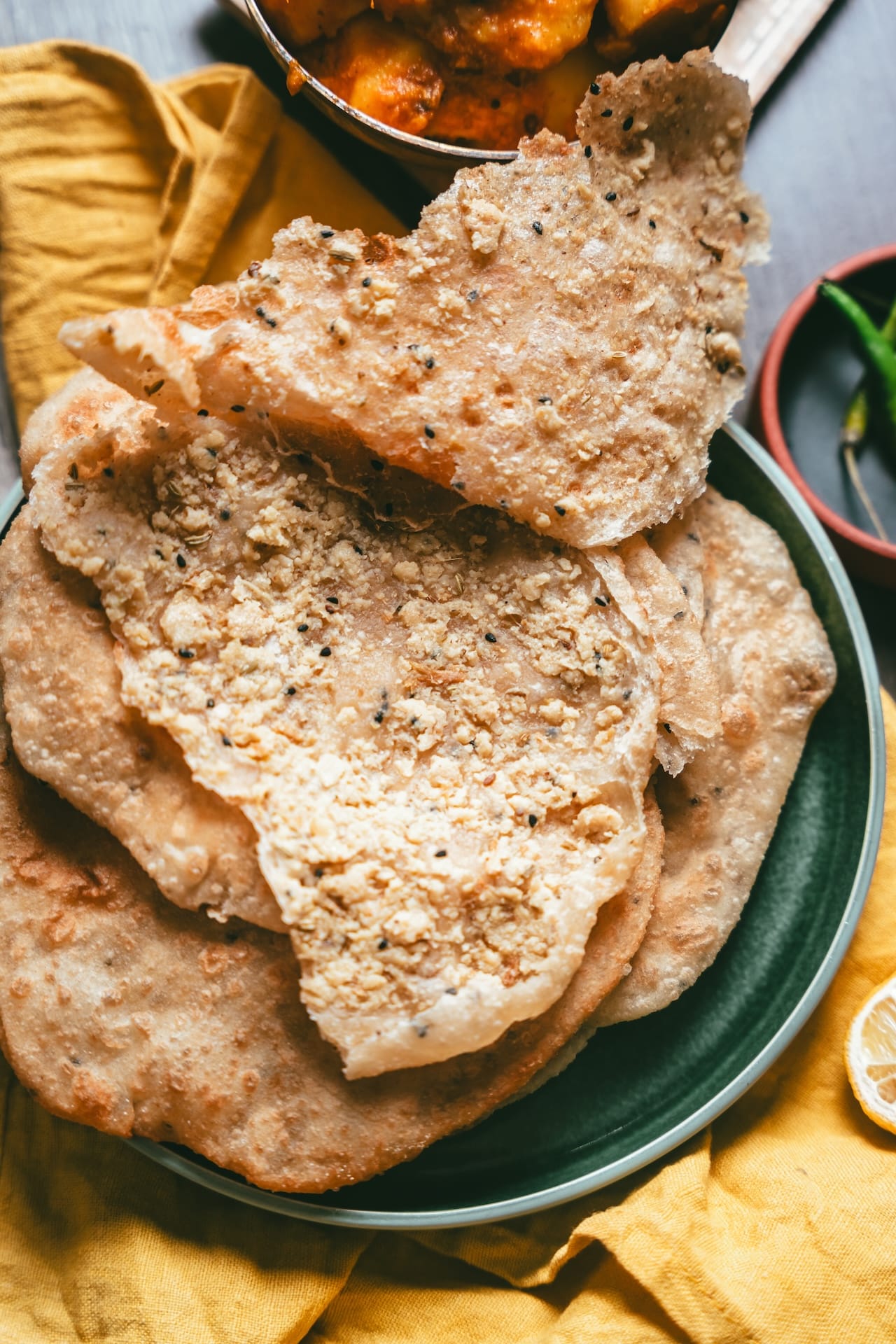
Pairing and Serving Radhaballavi
The beauty of Radhaballavi lies in its versatility. Traditionally, it is served with Aloor Dom (a Bengali potato curry made with spices and tomatoes) or Cholar Dal (a mildly sweet lentil dish cooked with coconut, raisins, and spices). The combination of crispy, soft bread and flavorful sides makes this dish truly irresistible.
For those who prefer a sweeter touch, some also enjoy it with a side of Bengali sweets like Rasgulla or Mishti Doi (sweetened yogurt), balancing savory and sweet in one meal.
FAQs
While regular puris are made with plain dough and fried, Radhaballavi is special because of the stuffing inside. The stuffing is made from urad dal (black gram), cooked with aromatic spices like fennel, ginger, and hing (asafoetida). This gives it a unique flavor and texture.
Yes, Radhaballavi is a fully vegetarian dish, making it a popular choice for festive occasions, religious events, and traditional meals in Bengali households.
Yes, you can experiment with gluten-free flours like rice flour or a mix of gluten-free all-purpose flour. However, the texture might differ from traditional Radhaballavi, which uses wheat or all-purpose flour.
es, soaking the urad dal (black gram) is necessary for softening the lentils and making them easier to grind into a smooth paste for the stuffing.
To get perfect, puffy Radhaballavis:
The dough should be smooth and not too soft or hard.
Roll the dough evenly, not too thin or thick.
Fry in hot oil; the oil should be at the right temperature (not too hot, not too cold).
Gently press the Radhaballavi with a ladle while frying to help it puff up.

If you’re a fan of Indian cuisine and haven’t yet explored the unique flavors of Radhaballavi, it’s time to roll up your sleeves and give this dish a try.
With its soft, flaky exterior and spicy, flavorful filling, paired with a side of soulful Bengali curry, Radhaballavi promises an unforgettable culinary experience.
Whether you’re a home cook, a foodie, or just someone who loves experimenting with new flavors, this dish will surely become a favorite.

Radhaballavi
Ingredients
For the filling
- 1.5 cups Urad Dal (no skin split black gram)
- 1.5 inch Fresh ginger
- 3 Green chilies
- 1 tablespoon Fennel Seeds
- 1 teaspoon Cumin powder
- 1 teaspoon salt
- 1 teaspoon Asafoetida
- 1 tablespoon Nigella seeds
- 2 tablespoon Mustard oil
For the dough
- 1.5 Cups All Purpose flour
- 1 teaspoon Sugar
- 1 Tsp Salt
- 1 teaspoon Nigella seeds
- ½ teaspoon Fennel Powder
- 2 tablespoon Oil
- Water to make the dough
Other Ingredients
- Vegetable oil To fry the stuffed bread
Instructions
Make the filling
- Wash and soak the Urad dal in enough water for at least 5 hours or overnight.
- Once it's soaked and puffed enough, discard the water and blend to make a course texture thick paste. Add water if needed, but avoid adding too much water.
- Using a motor pestle, pound the ginger, green chili, fennel seeds and little salt.
- Place a heavy bottom skillet in medium heat and pour the mustard oil. Once the oil heats up, add the nigella seeds. Stir it around for a few seconds to release the aroma.
- Add the pounded ginger and chili along with asafoetida and stir it around. Cook for 2 minutes or release the aroma.
- Lower the heat to medium low and add the lentil paste. Sprinkle salt and cumin powder. Now stir and cook the mixture until all the moisture is gone and it comes together as a dough.
- The filling is ready and once it's cooled it can be used to stuff to make the fried bread, or you can store it for a few days in the refrigerator.
Prepare the Dough
- In a mixing bowl add the flour, salt, sugar, nigella seeds, and fennel powder. Give it a mix.
- Pour oil and mix it around to incorporate the oil all over. Hold a small portion of the flour in your fist and if it holds shape, it is ready for the next step. If the shape doesn't hold, pour a little more oil and mix it around.
- Next, pour water little by little to make a smooth dough. Once the dough is ready, rub a little oil on it and cover with a damp kitchen towel. Let it rest for 30 to 40 minutes.
- After the dough is well rested, divide the dough into small portions. Let the small portions rest for 10 minutes.
Filling and Frying the bread
- Take one small portion of the dough and flatten it out. You can either roll it gently or just use your hand to press and rotate. Try to keep it in an even layer as you spread it out.
- Fill the center with some of the filling and then bring the edges together to seal tight. Be gentle as you do this step, as you want the filling to stay inside and burst out.
- Next, roll the stuffed dough using gentle pressure. You can either run a little oil or flour as you roll the dough out. It doesn't have to be a perfect circle, but just try to keep it evenly rolled out so it cooks evenly in hot oil.
- Pour enough oil in a heavy bottom wok and bring the oil to high heat. It should be at, 360F to 375F. One good way to test if the oil is hot enough or not is by dipping the wooden stick in hot oil and if you see bubbles showing up around the stick as soon as it is dipped, the oil is ready.
- Very gently and carefully, slide the stuffed dough. The oil will start to sizzle and within a few seconds the rolled dough with puff up. If the dough is rolled evenly and the filling didn't burst out, then the hot air will pass though evenly, making the rolled bread puffed perfectly. Flip and fry for a few more seconds. Take radhabhallavi off the hot oil using a slotted spoon and place it on a wire rack for it to cool down a little bit before serving.



